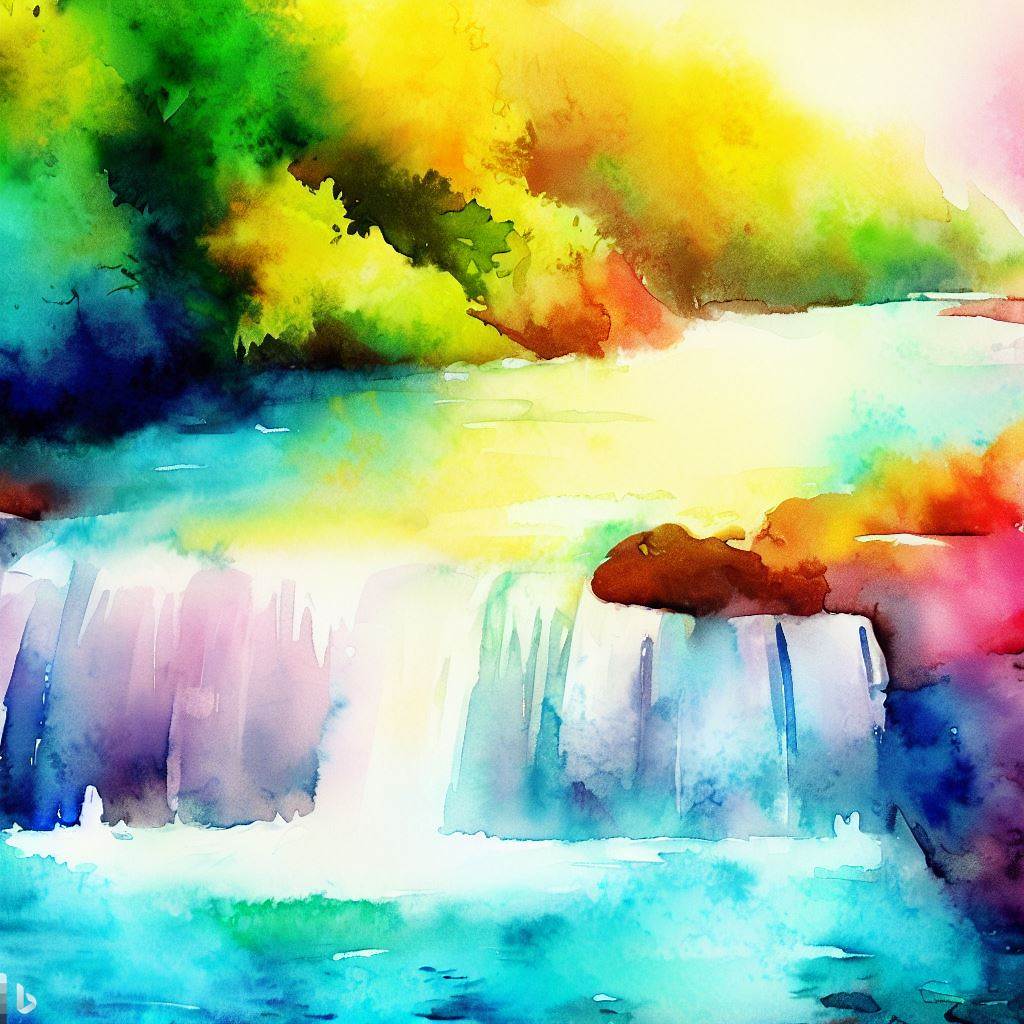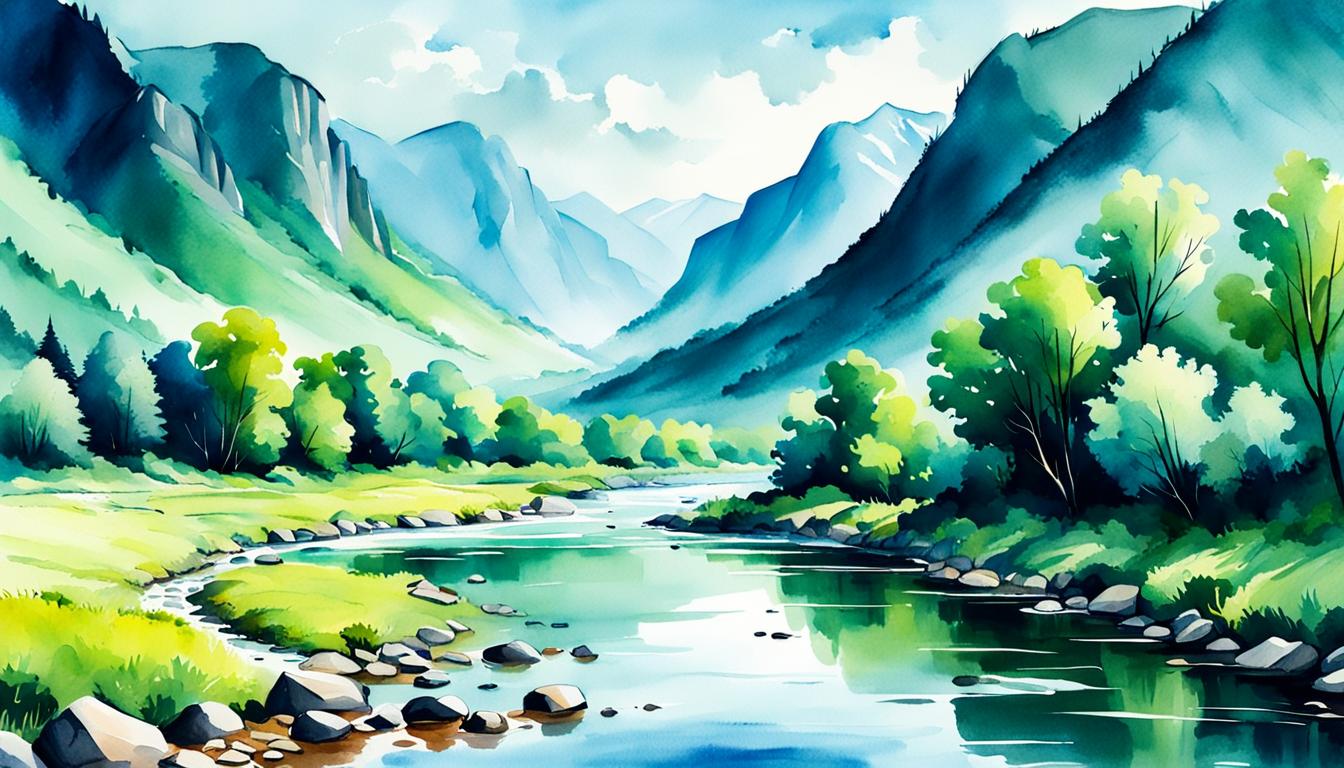Watercolor painting is a captivating art form that offers endless possibilities for self-expression and creativity. For aspiring artists, the prospect of turning their passion for watercolors into a viable career as a commercial painter can be an exciting endeavor. This comprehensive article will guide you through the process of “how to become a successful watercolor painter“, providing valuable insights, tips, and strategies to help you navigate the art market and establish a thriving business.

Understanding the Commercial Aspect of Watercolor Painting
Before delving into the specifics of becoming a commercial watercolor painter, it’s essential to grasp the commercial aspect of the art world. Commercial artists create artwork with the intention of selling it to collectors, galleries, businesses, or individuals. Unlike purely personal or fine art, commercial artwork serves a specific purpose, whether it be for advertising, branding, illustration, or decorative purposes.
Developing Your Skills and Style
To become a successful commercial watercolor painter, you must first hone your skills and develop a unique artistic style that sets you apart from others. Here are some steps to guide you in this process:
Step 1: Master the Basics
Start by mastering the foundational techniques of watercolor painting. Practice brush control, color mixing, and various application techniques like wet-on-wet, wet-on-dry, and glazing. Strengthen your understanding of composition, perspective, and values to create well-balanced and visually appealing artworks.
Step 2: Experiment and Explore
Take the time to experiment with different subject matters, styles, and themes. Explore various genres, such as landscapes, still life, portraits, or abstracts, to find your preferred niche. Allow yourself to take risks, push boundaries, and embrace your unique artistic voice.
Step 3: Develop a Signature Style
While experimenting is essential, strive to develop a signature style that becomes your artistic trademark. A distinct style will help you stand out in the competitive art market and attract potential clients who resonate with your work. Whether it’s through the use of bold colors, loose brushwork, or a specific subject matter, find your artistic voice and let it shine through your paintings.
Building Your Portfolio
A well-curated portfolio is crucial for showcasing your skills, style, and versatility as a commercial watercolor painter. It serves as a visual representation of your talent and acts as a marketing tool to attract potential clients and opportunities. Here’s how you can build an impressive portfolio:
Step 1: Select Your Best Work
Carefully choose a selection of your finest watercolor paintings that demonstrate your technical proficiency and artistic vision. Aim for a cohesive and diverse portfolio that showcases your range and versatility as an artist.
Step 2: Presentation is Key
Invest time in presenting your portfolio in a professional and visually appealing manner. Use high-quality photographs or scans of your artwork and consider investing in a professional photographer if needed. Organize your portfolio in a logical sequence and provide clear and concise descriptions for each artwork, including dimensions and any relevant details.
Step 3: Online Presence
In today’s digital age, it’s crucial to have an online presence to reach a wider audience and connect with potential clients. Create a website or online portfolio to showcase your artwork. Include a biography, artist statement, and contact information. Utilize social media platforms such as Instagram, Facebook, or Pinterest to share your work, engage with fellow artists, and build a following.
Establishing Your Brand
As a commercial watercolor painter, establishing a strong brand identity will help differentiate you from your competitors and attract clients who resonate with your artistic vision. Consider the following steps:
Step 1: Define Your Brand Identity
Determine what sets you apart as an artist and what values you want your brand to embody. Identify
your target audience and the niche market you wish to cater to. Develop a compelling artist statement that reflects your artistic philosophy and the emotions you aim to evoke through your work.
Step 2: Consistent Visual Identity
Create a consistent visual identity that reflects your brand. This includes your logo, color palette, typography, and overall design aesthetic. Use these elements consistently across your website, social media platforms, business cards, and other marketing materials.
Step 3: Network and Collaborate
Building relationships within the art community is essential for gaining exposure and expanding your client base. Attend art events, workshops, and exhibitions to connect with fellow artists, gallery owners, and potential clients. Collaborate with other artists or organizations to showcase your work and leverage their networks.
Marketing and Selling Your Artwork
To succeed as a commercial watercolor painter, you must learn effective marketing and sales strategies to promote and sell your artwork. Here are some key steps to consider:
Step 1: Develop a Marketing Plan
Create a comprehensive marketing plan that outlines your target market, promotional strategies, and sales goals. Consider both online and offline marketing channels such as social media advertising, email marketing, art fairs, galleries, and collaborations with interior designers or art consultants.
Step 2: Professional Presentation
Ensure that your artwork is professionally framed or presented to enhance its value and appeal to potential buyers. Invest in high-quality materials and pay attention to details such as matting, framing, and protective measures to preserve the longevity of your artwork.
Step 3: Pricing Your Artwork
Determining the right price for your artwork can be challenging. Research the market value of similar artworks by other artists in your niche and consider factors such as size, complexity, time invested, and your level of experience. Gradually increase your prices as your reputation and demand grow.
Step 4: Online Sales Platforms
Utilize online art marketplaces and platforms that cater specifically to artists selling their work. Websites such as Etsy, Saatchi Art, or Artfinder provide exposure to a global audience and offer a convenient way for potential buyers to discover and purchase your artwork.
FAQs – How to Become a Successful Watercolor Painter
What are the basic supplies I need to start painting with watercolors?
You will need watercolor paints, watercolor paper, brushes, water, and a palette.
What are some basic watercolor painting techniques?
Some basic watercolor painting techniques include wet-on-wet, dry brush, and glazing.
What are some advanced watercolor painting techniques?
Some advanced watercolor painting techniques include lifting, masking, and salt.
What are some tips for becoming a successful watercolor painter?
Some tips for becoming a successful watercolor painter include practicing regularly, experimenting with different techniques, being patient, and learning from others.


